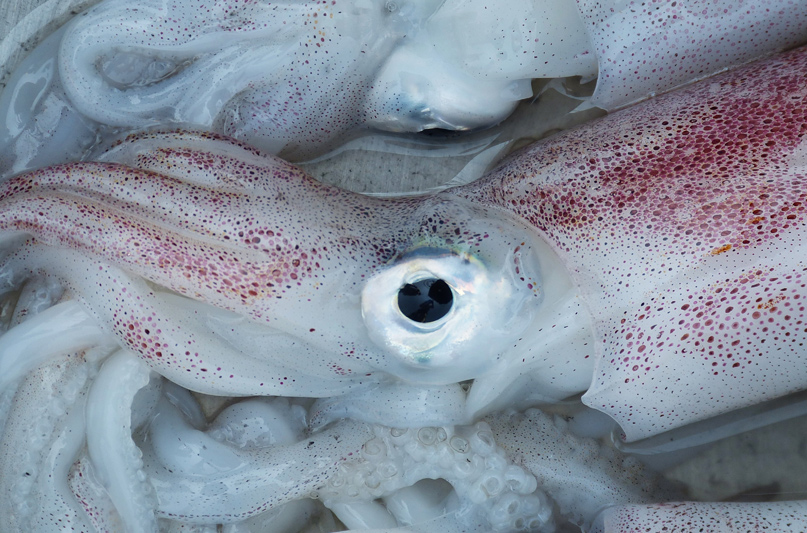 The weather was looking up for squid fishermen last fall when cooler ocean temperatures rolled in, but this summer really did bring the heat. Every year, West Coast squid fishermen have a yearly quota of 118,000 tons in a commercial season that runs from April 1 to March 31 of the following year. As of June 28, 2018, seiners have only caught 9,931 tons of squid, which led California Wetfish Producers Association Executive Director Diane Pleschner-Steele to speculate that it is unlikely that seiners will catch their quota again this year. The culprit? The threat of returning El Niño conditions.
The weather was looking up for squid fishermen last fall when cooler ocean temperatures rolled in, but this summer really did bring the heat. Every year, West Coast squid fishermen have a yearly quota of 118,000 tons in a commercial season that runs from April 1 to March 31 of the following year. As of June 28, 2018, seiners have only caught 9,931 tons of squid, which led California Wetfish Producers Association Executive Director Diane Pleschner-Steele to speculate that it is unlikely that seiners will catch their quota again this year. The culprit? The threat of returning El Niño conditions.
Seiners remained hopeful when ocean temperatures cooled last fall after another less-than-satisfactory harvest. Optimism was in the air until this steamy summer began, concerning fishermen once again. By late June, Oregon reported healthy landings, and according to Pleschner-Steele, harvest numbers are increasing in California. “We’re watching the inklings of an El Niño,” said Pleschner-Steele. “It’s an interesting season. It started well, and it’s still going, better than when we were in the throes of El Niño,” but the fleet hasn’t met quota in recent years thanks to oceanic conditions and other contributing factors. The 118,000-ton squid quota is considered an optimal harvest number these days.
Although numbers are dwindling, National Fishermen reports that these shortages might be a good thing economically with our current tariff situation with China. A steep 25 percent tariff went into effect on U.S. squid products shipped to China, which is one of the West Coast’s primary squid markets.
Pleschner-Steele remarks on this issue, “It’s basically shutting down the China market for us.” She goes on to explain that a pre-existing tariff of 27 percent was already in place and the 25 percent tariff is now stacked on top of that. “There are other markets out there,” explains Pleschner-Steele, “it’s just at which price point?”